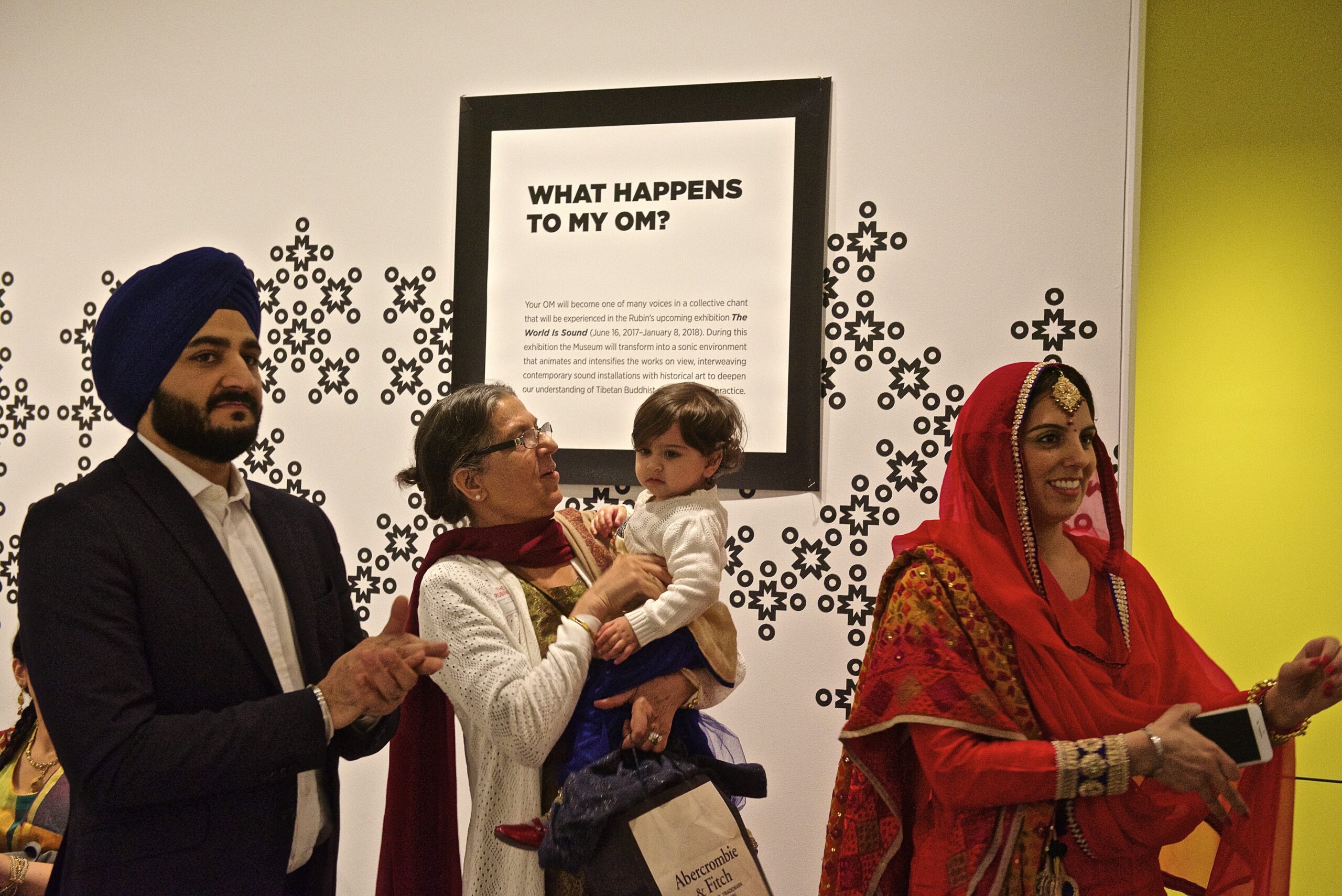
Sikhs believe that every individual is filled with divine potential. At a time when racial and religious tension is high, New York Sikhs continue to celebrate their faith and values of equality, even when occasionally faced with senseless discrimination. At the Museum, Sikh and non-Sikh community members came together to celebrate Sikh culture and participate in the OM Lab.
The Vaisakhi Festival
The Rubin Museum’s Himalayan Heritage Meetup met this month in honor of the Vaisakhi festival, traditionally a celebration of the end of the harvest season in India. The event was hosted along with community partner India Home, one of the only non-profits in the New York area to offer culturally competent services to South Asian seniors, and the Sikh Cultural Center, one of the biggest Gurudwara’s (Sikh place of worship) in New York City.
For the 5.7 million followers of the Sikh faith around the world, April is the month in which Guru Gobind Singh, the tenth Sikh Guru, passed the leadership of the faith to the Khalsa ( the community of initiated Sikhs) and the Guru Granth Sahib (the scriptural canon). The Vaisakhi festival honors that event with song, dance, and feasting.
OM and Other Sacred Syllables
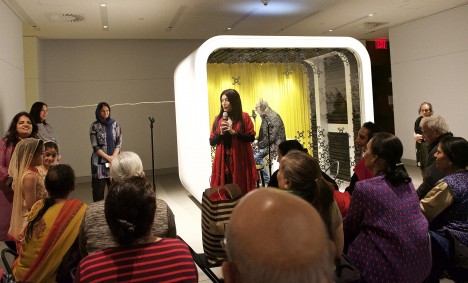
As audience members gathered in one of the Museum’s latest installations, the OM Lab, the Rubin’s Assistant Manager of Cultural Programs Tashi Chodron welcomed everyone to the Museum and introduced the program for the evening. Then Risha Lee, the co-curator of the upcoming The World Is Sound exhibition, explained the impetus behind the OM Lab. OM is considered the primal sound of the universe, the elemental sound of creation and is believed to contain the power of all other mantras.
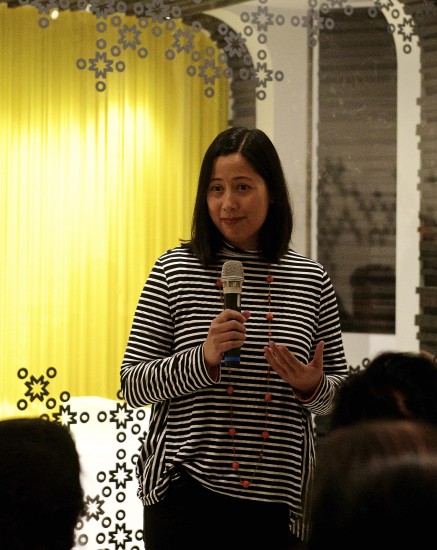
Risha explained to a rapt audience how the OM and “its three phonetic components (A-U-M)” is central to many Asian religious traditions, including Sikhism, and has endured for more than three thousand years. She invited audience members to make use of the lab’s recording booth and offer their OMs and join thousands of others in the chant that will be featured in the forthcoming exhibition.
The next part of the program featured Sharan Bir Kaur, a Kundalini Yoga teacher, who led the audience in a short chanting meditation using the mantra “Wahe Guru” which is the Gurumantra or seed mantra in Sikhism. As Sharan explained it “wahe“ (Wha-hay) means “ecstasy,” an exclamation of the joy of existence. “Guru” (goo-roo) means the teacher or that force which leads one from darkness unto light.
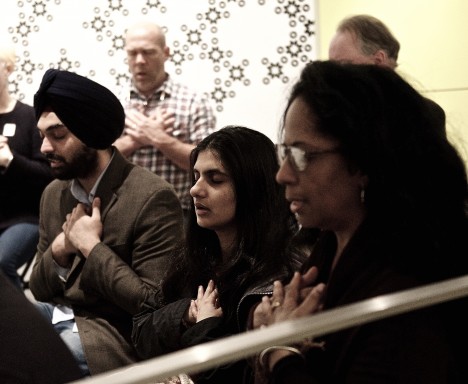
The Blessings and Challenges Facing New York Sikhs
The celebration continued with Jagir Singh Bains, an elder from the Sikh Cultural Center, making a short presentation about the basic tenets of Sikhism and the meaning behind the symbols of the faith, like the turban, the beard, and the kada (the steel bangle). He explained how equality was at the center of Sikh religion. The langar, or the free meal offered in every Gurudwara, where all eat together regardless of gender, caste, class, or religion was the embodiment of the philosophy that believed everyone was divine, he said. He emphasized how Sikh gurus rebuke practices that marginalize women, especially in modern South Asian societies.
Meera Venugopal, the Communications Manager of India Home, spoke after Jagir Bains, drawing attention to the increase in hate crimes against Sikhs and the misunderstandings about the faith that continue to exist in American society. At her urging, several audience members suggested ways to combat hate crime and educate the public.
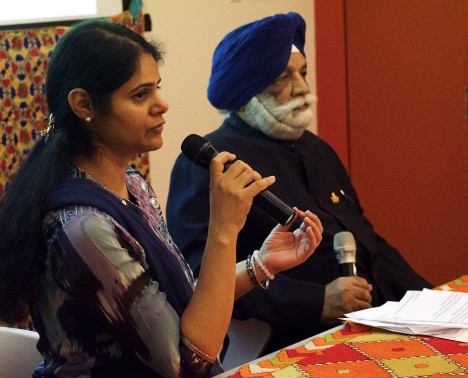
Dance to the Dhol Drums!
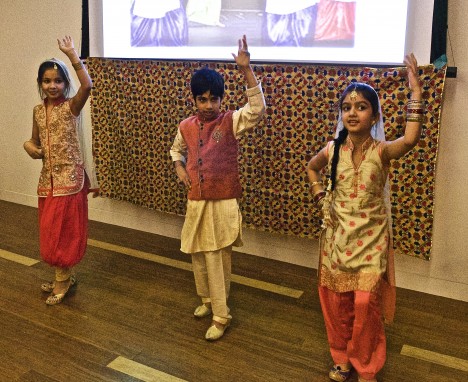
The evening ended on a lighter note with three children performing the bhangra, a vigorous Sikh folk dance. Afterward, Manpreet Kaur of the Sikh Cultural Society led a Bhangra demo and soon had the enthusiastic crowd dancing to the irresistible beats of the dhol drum.
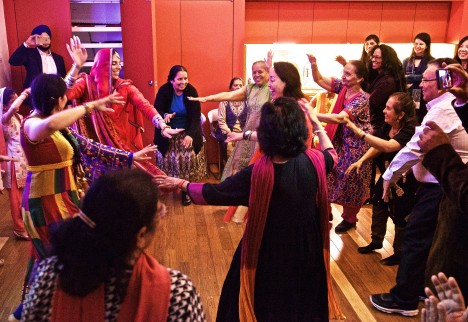
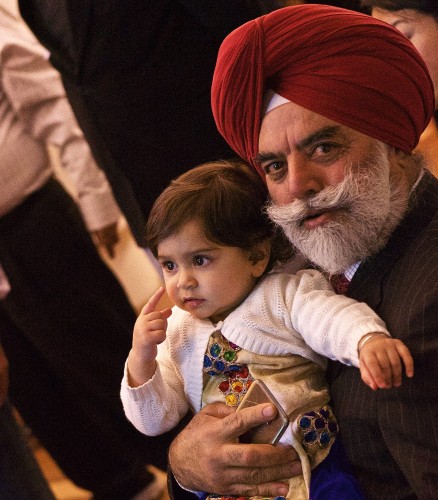
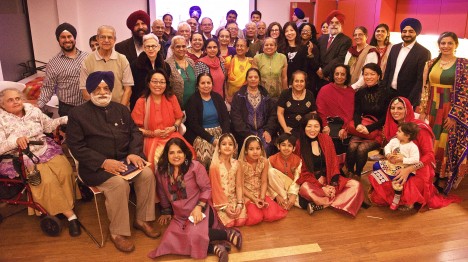
The Himalayan Heritage Meetup program meets on the first Wednesday of every month and focuses on different cultures and festivals of Himalayan Asia. All are welcome to attend! Find out about an upcoming program.
About the Author
Meera Nair does communications for India Home and is the author of Video (NY: Pantheon), and the children’s books, Maya Saves The Day (India: Duckbill) and Maya In a Mess. Her work has appeared on NPR and in The Washington Post and The New York Times. She currently teaches writing at New York University.

